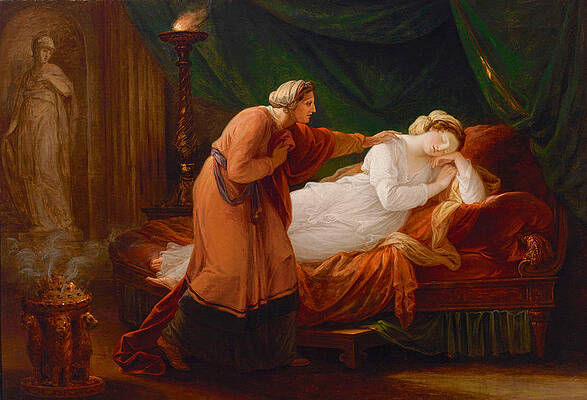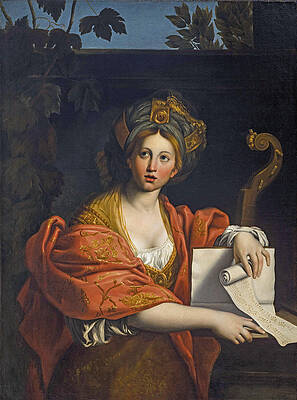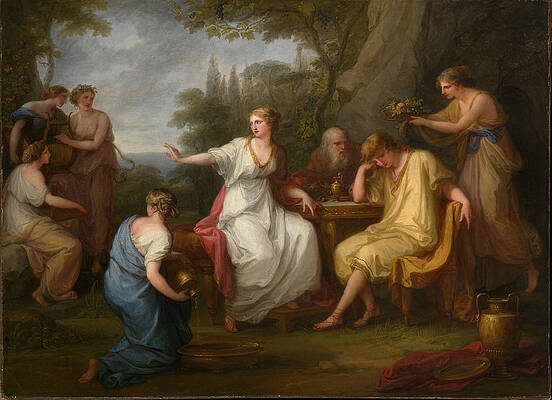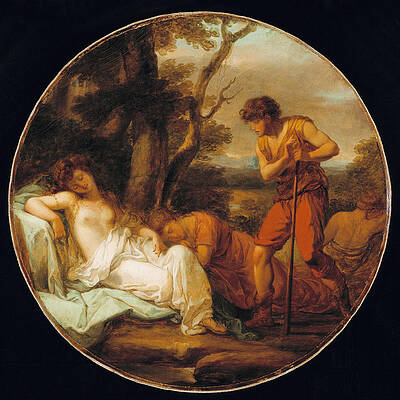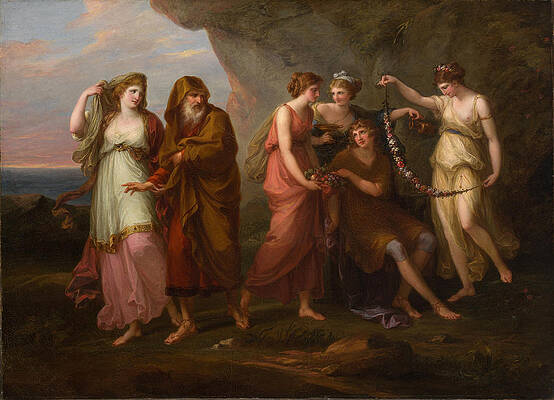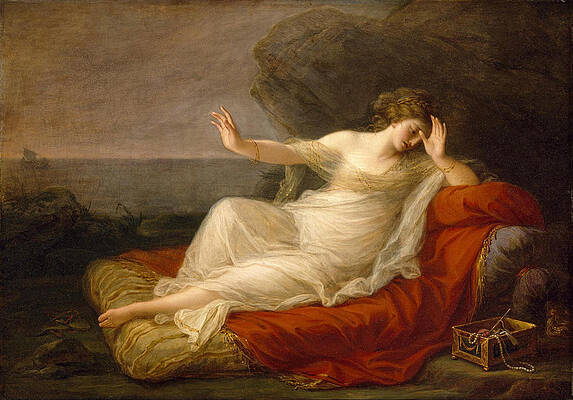Maria Anna Angelika Kauffmann / Angelica Kauffman
Paintings
Penelope Awakened by Eurycleia
Miranda and Ferdinand
The Family of the Earl of Gower
Portrait of Mary Middleton, Mrs Ralph Clavering
Portrait of Eleanor, Countess of Lauderdale
Rinaldo and Armida
Portrait of Johann Friedrich Reiffenstein
Portrait of the Duca di Chiesi
A Sybil
Telemachus and the Nymphs of Calypso
Cymon and Iphigenia
Female Allegory
Teresa Bandettini-Landucci von Lucca
Telemachus and the Nymphs of Calypso
Ariadne Abandoned by Theseus
Cephalus with Procris and Cupid
Portrait of John Apthorp of Boston and his Daughters
Portrait of Franziska von Kaunitz-Rietberg Countess of Weissenwolff
Maria Theresia Countess Merveldt, born Countess Dietrichstein
Portrait of the Irish lawyer and politician Philip Tisdall
John Simpson, the father of Maria Susanna Lady Ravensworth
Portrait of Louisa Leveson Gower as Spes
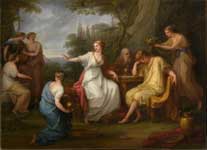
The Sorrow of TelemachusCymon and Iphigenia Diana and her nymphs bathingFemale Allegory
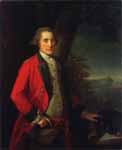
Portrait of Lieutenant General James Cuninghame
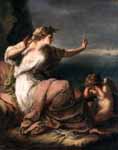
Ariadne Abandoned by Theseus on Naxos
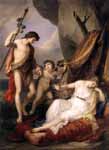

Portrait of Charles Brudenell-Bruce
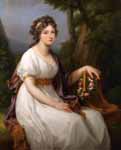
Portrait of Henrietta Maria Hill

Portrait of Prince Stanislaus Poniatowski
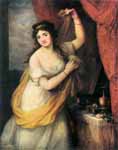

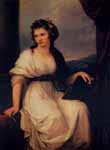
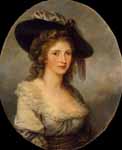
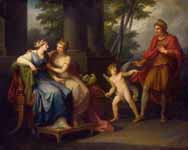
Venus Induces Helen to Fall in Love with Paris
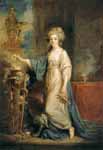
Portrait of a Woman as a Vestal Virgin

Portrait of a Woman Dressed as Vestal Virgin
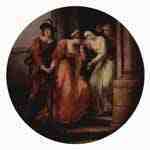
Farewell Abélards from Héloise, Tondo
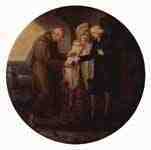
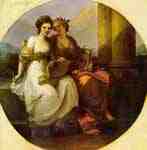
Poetry embraces painting, Tondo
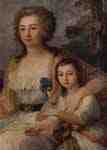
Anna Protasova with her nieces, detail
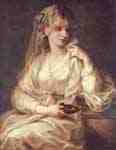
Portrait of a lady as a vestal


Scene with Miranda and Ferdinand, Oval
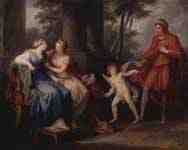
Venus persuades Helena to hear Paris
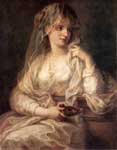
Portrait of a Woman dressed as Vestal Virgin
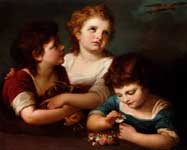
Children with a birds nest and flowers,
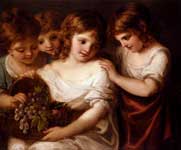
Children with a basket of fruit,
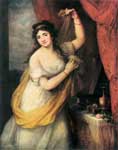
Fine Art Prints | Greeting Cards | Phone Cases | Lifestyle | Face Masks | Men's , Women' Apparel | Home Decor | jigsaw puzzles | Notebooks | Tapestries | ...
Angelica Kauffman, RA (in full Maria Anna Angelika/Angelica Katharina Kauffman; 30 October 1741 – 5 November 1807) was a Swiss-born Austrian Neoclassical painter who had a successful career in London and Rome. Though born as "Kauffmann", Kauffman is the preferred spelling of her name in English; it is the form she herself used most in signing her correspondence, documents and paintings.
Life
Early years
Kauffman was born at Chur in Graubünden, Switzerland, where her father was working for the local bishop but grew up in Schwarzenberg in Vorarlberg/Austria where her family originated. Her father, Joseph Johann Kauffmann, was a relatively poor man but a skilled painter, who was often travelling for his work. It was he who taught his precocious daughter. Angelica rapidly acquired several languages from her mother, Cleophea Lutz, read incessantly and showed talent as a musician, but her greatest progress was in painting, and by her twelfth year she had become a notability, with bishops and nobles being her sitters.
In 1754 her father took her to Milan. Later visits to Italy of long duration followed. In 1763 she visited Rome, returning again in 1764. From Rome she passed to Bologna and Venice, everywhere feted for her talents and charm. Writing from Rome in August 1764 to his friend Franke, Winckelmann refers to her popularity; she was then painting his picture, a half-length; of which she also made an etching. She spoke Italian as well as German, he says, and expressed herself with facility in French and English - one result of the last-named accomplishment being that she became a popular portraitist for British visitors to Rome. "She may be styled beautiful," he adds, "and in singing may vie with our best virtuosi."
Years in Great Britain
rTroilus and Cressida, Act V, Scene II (1789), one of her many Shakespeare tableaux. Engraved in 1795 for an edition of Shakespeare by the Boydell Shakespeare Gallery.
While in Venice, Kauffman was induced by Lady Wentworth, the wife of the British ambassador, to accompany her to London. One of the first pieces she completed in London was a portrait of David Garrick, exhibited in the year of her arrival at "Mr Moreing's great room in Maiden Lane." The rank of Lady Wentworth opened society to her, and she was everywhere well received, the royal family especially showing her great favor. Her firmest friend, however, was Sir Joshua Reynolds. In his pocket-book her name as "Miss Angelica" or "Miss Angel" appears frequently; and in 1766 he painted her, a compliment which she returned by her Portrait of Sir Joshua Reynolds. Another instance of her intimacy with Reynolds is to be found in her variation of Guercino's Et in Arcadia ego, a subject which Reynolds repeated a few years later in his portrait of Mrs Bouverie and Mrs Crewe.
It was probably owing to Reynolds's good offices that she was among the signatories to the petition to the king for the establishment of the Royal Academy. In its first catalogue of 1769 she appears with "R.A." after her name (an honor she shared with one other woman, Mary Moser); and she contributed the Interview of Hector and Andromache, and three other classical compositions. She visited Ireland briefly in 1771, and undertook a number of portrait commissions.
Kauffman (seated), in the company of other "Bluestockings" (1778)
Her friendship with Reynolds was criticized in 1775 by fellow Academician Nathaniel Hone in his satirical picture The Conjurer. This attacked the fashion for Italianate Renaissance art, ridiculed Reynolds and included a nude caricature of Kauffman, later painted out by Hone. The work was rejected by the Royal Academy.
From 1769 until 1782 Kauffman was an annual exhibitor with the Royal Academy, sending sometimes as many as seven pictures, generally on classical or allegoric subjects. One of the most notable was Leonardo expiring in the Arms of Francis the First (1778).[2]
In 1773 she was appointed by the Academy with others to decorate St Paul's Cathedral, a scheme that was never carried out, and it was she who, with Biagio Rebecca, painted the Academy's old lecture room at Somerset House.
History Painting
Kauffman's El juicio de Paris at Museo de Arte de Ponce, Ponce, Puerto Rico
While Kauffman produced many types of art, she identified herself primarily as a history painter, an unusual designation for a woman artist in the 18th century. History painting was considered the most elite and lucrative category in academic painting during this time period and, under the direction of Sir Joshua Reynolds, the Royal Academy made a strong effort to promote it to a native audience more interested in commissioning and buying portraits and landscapes. Despite the popularity that Kauffman enjoyed in British society, and her success there as an artist, she was disappointed by the relative apathy of the British towards history painting. Ultimately she left Britain for the continent, where history painting was better established, held in higher esteem and patronized.
History painting, as defined in academic art theory, was classified as the most elevated category. Its subject matter was the representation of human actions based on themes from history, mythology, literature, and scripture. This required extensive learning in biblical and Classical literature, knowledge of art theory and a practical training that included the study of anatomy from the male nude. Most women were denied access to such training, especially the opportunity to draw from nude models; yet Kauffman managed to cross the gender boundary to acquire the necessary skill to build a reputation as a successful history painter who was admired by colleagues and eagerly sought by patrons.[3]
Later years in Rome
Detail of Tragedy and Comedy, painted in Rome in 1791 (National Museum in Warsaw). Harmonious and powerful colours[4] and the soft-brushed, multi-layered style of English portraitists, Sir Joshua Reynolds and Thomas Gainsborough,[5] are typical for Kauffmann's paintings.
It is possible that Kauffman's popularity declined as a consequence of her unfortunate marriage but in 1781, after her first husband's death (she had been long separated from him), she married Antonio Zucchi (1728–1795), a Venetian artist then resident in Britain. Shortly thereafter she retired to Rome, where she befriended, among others, Johann Wolfgang von Goethe, who said she worked harder and accomplished more than any artist he knew; yet, always restive, she wanted to do more[6] and lived for 25 years with much of her old prestige.
In 1782, Kauffman's father died, as did her husband in 1795. She continued at intervals to contribute to the Royal Academy in London, her last exhibit being in 1797. After this she produced little, and in 1807 she died in Rome, being honored by a splendid funeral under the direction of Canova. The entire Academy of St Luke, with numerous ecclesiastics and virtuosi, followed her to her tomb in Sant'Andrea delle Fratte, and, as at the burial of Raphael, two of her best pictures were carried in procession.
Legacy
The works of Angelica Kauffman have retained their reputation. By 1911, rooms decorated with her work were still to be seen in various quarters. At Hampton Court was a portrait of the duchess of Brunswick; in the National Portrait Gallery, a self-portrait (NPG 430).[7] There were other pictures by her at Paris, at Dresden, in the Hermitage at St Petersburg, in the Alte Pinakothek at Munich, in Kadriorg Palace, Tallinn (Estonia)[8] and in the Joanneum Alte Galerie at Graz. The Munich example was another portrait of herself;[9] and there was a third in the Uffizi at Florence. A few of her works in private collections were exhibited among the Old Masters at Burlington House.
Kauffman is also well known by the numerous engravings from her designs by Schiavonetti, Francesco Bartolozzi and others. Those by Bartolozzi especially found considerable favour with collectors. Charles Willson Peale (1741–1827), artist, patriot, and founder of a major American art dynasty, named several of his children after notable European artists, including a daughter, Angelica Kauffman Peale.
A biography of Kauffman was published in 1810 by Giovanni Gherardo De Rossi (it).[10] The book was also the basis of a romance by Léon de Wailly (fr) (1838) and it prompted the novel contributed by Anne Isabella Thackeray to the Cornhill Magazine in 1875 entitled "Miss Angel".
Kauffman is memorialized in Judy Chicago's The Dinner Party.[11]
References
Wendy Wassying Roworth, ed. Angelica Kauffman: A Continental Artist in Georgian England. (London: Reaktion Books, 1992), 193.
King Francis I had become a close friend of Leonardo da Vinci during the artist's last years, and Vasari records that the King held Leonardo's head in his arms as he died. Aside from Kauffman, this story was portrayed in romantic paintings by Ingres, Ménageot and other French artists, though some historians consider it legend rather than fact.
Delia Gaze, Dictionary of Women Artists, vol. 2 (USA: Fitzroy Dearborn, 1997), 766
Joyce Townsend, ed. (2008). Preparation for painting: the artist's choice and its consequences. Archetype Publications. p. 105. ISBN 19-04982-32-8.
Elizabeth Johns. "Keepsakes of the Beloved: Portrait Miniatures and Profiles 1790 to 1840". Washington County Museum of Fine Arts. Retrieved 20 June 2013.
Goethe, Italian Journey, 1786–1788
"National Portrait Gallery - Portrait - NPG 430; Angelica Kauffmann". npg.org.uk.
"Art Museum of Estonia". Retrieved 15 February 2013.
http://www.pinakothek.de/alte-pinakothek/sammlung/kuenstler/kuenstler_inc.php?inc=kuenstler&which=1767
"Documenting Anjelica Kauffman's Life and Art". JHU Journals. Retrieved 31 January 2013.
"Angelica Kauffman". The Dinner Party: Heritage Floor. Brooklyn Museum. Retrieved 4 June 2012.
Exhibitions
Retrospektive Angelika Kauffmann (270 works, c. 450 ill. ), Düsseldorf, Kunstmuseum (15 November 1998 - 24 January 1999); München, Haus der Kunst (5 February - 18 April 1999); Chur, Bündner Kunstmuseum (8 May – 11 July 1999).
Further reading
This article incorporates text from a publication now in the public domain: Henry Austin Dobson (1911). "Kauffmann, Angelica". In Chisholm, Hugh. Encyclopædia Britannica (11th ed.). Cambridge University Press.
"Kauffmann, Maria Angelica". The American Cyclopædia. 1879. This source reports she procured a divorce from the impostor Count Horn.
Bettina Baumgärtel (ed.): Retrospective Angelika Kauffmann, Exh. Cat. Dusseldorf, Kunstmuseum; Munich, Haus der Kunst, Chur, Bündner Kunstmuseum, Ostfildern, Hatje 1998, ISBN 3-7757-0756-5.
Kauffmann, Angelica. (2001). "»Mir träumte vor ein paar Nächten, ich hätte Briefe von Ihnen empfangen«. Gesammelte Briefe in den Originalsprachen. Ed. Waltraud Maierhofer. Lengwil: Libelle, 2001. ISBN 978-3-909081-88-2 (Letters in German, English, Italian, French; introduction and commentary in German.)
Kauffmann, Angelika. (1999) "Briefe einer Malerin." Ed. Waltraud Maierhofer. Mainz: Dieterich'sche Verlagsbuchhandlung.
Natter, Tobias (ed.). "Angelica Kauffmann: A Woman of Immense Talent." Ostfildern: Hatje-Cantz, 2007. ISBN 978-3-7757-1984-1.
Rosenthal, Angela. (2006). Angelica Kauffman: Art and Sensibility. New Haven, Connecticut: Yale University Press. ISBN 0-300-10333-6
Roworth, Wendy Wassyng (Spring 2004). "Documenting Angelica Kauffman's Life and Art". Eighteenth-Century Studies 37 (3): 478–482. doi:10.1353/ecs.2004.0031. Retrieved 23 April 2013.
Angelica Kauffman Research Project: Forthcoming catalogue raisonné by Bettina Baumgärtel.
----
Fine Art Prints | Greeting Cards | Phone Cases | Lifestyle | Face Masks | Men's , Women' Apparel | Home Decor | jigsaw puzzles | Notebooks | Tapestries | ...
----
Artist
A - B - C - D - E - F - G - H - I - J - K - L - M -
N - O - P - Q - R - S - T - U - V - W - X - Y - Z
Retrieved from "http://en.wikipedia.org/"
All text is available under the terms of the GNU Free Documentation License


